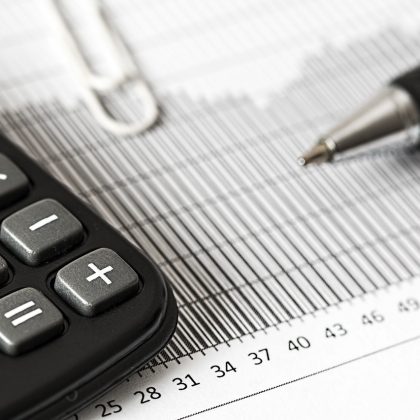The Facebook Oversight Board as Operational-Level Grievance Mechanism
Should Facebook users be treated equally? In late 2018, Mark Zuckerberg announced the creation of the Facebook Oversight Board (FOB), a purportedly independent global body that would adjudicate hard cases of content moderation on the platform. In anticipation of the FOB’s impending launch, this question will loom large as the board begins to encounter different kinds of aggrieved users on the platform, particularly state actors.
The FOB is an ambitious project of remediation of the kind promoted under the UN Guiding Principles on Business and Human Rights (UNGPs). It is unique as an operational-level grievance mechanism (OGM) in terms of scale and structure. In January this year, Facebook released the by-laws that would govern the operations of the board. Together with a charter as founding document, the by-laws empower the FOB to make “principled” and “independent” decisions on individual pieces of content posted on the platform. Facebook’s Community Standards would be the “applicable law.” The FOB’s jurisdiction is triggered through a process akin to litigation: users appealing to higher authority outside of Facebook if, despite exhausting the ordinary complaint and appeal mechanism within Facebook, they still view the removal of the post unjustified. Facebook may also refer cases to the FOB on its own initiative. To guarantee independence, the FOB would be administered by a trust, a legal entity separate from Facebook.
Commentators have been quick to point out the benefits and limitations of the FOB. Others, including myself, have posed the challenges inherent in such an undertaking. For instance, for purposes of providing remedy, identifying potential victims of harmful speech may prove difficult given its intangible effects.
Beyond these considerations, there is a central assumption surrounding the FOB’s design: that the FOB is meant to provide redress to the Facebook user. Article 2 of the FOB charter empowers “people using Facebook’s services” to escalate content for board review. Article 3 allows the “posting person or the reporting person” to submit written statements to the board. Meanwhile, the by-laws devote Article 3 to “people” and provide the procedure for bringing cases to the board.
But who exactly is the Facebook user? The language of the charter and by-laws conjures an innocuous image of an individual user, without regard to the different actors lurking on the platform for nefarious ends. Zuckerberg’s decision to create the FOB in 2018 was in fact a response to online speech harms involving state-sponsored actors or state actors themselves. According to Zuckerberg, “[t]he past two years have shown that without sufficient safeguards, people will misuse these tools to interfere in elections, spread misinformation, and incite violence.” That year saw Facebook being criticized for enabling the spread of incitement to violence in Myanmar and foreign interference in the US presidential elections, among others. These harms were linked to state actors. In an unprecedented move, Facebook suspended the account and official page of the Myanmar military’s commander-in-chief for inciting others against the Rohingya. As I have analyzed here, this is a remarkable example of a private entity restricting a state actor’s speech as a platform user.
It is reasonable to assume that many of the cases that will occupy the FOB’s attention will involve Facebook posts escalated by individual users, for whom the remedial process is intended. Nonetheless, the FOB should be prepared to engage state actors that will try to make use of the mechanism. In this case, how would speaker identity inform access to the FOB and guide the FOB’s decision-making?
Speaker identity under international law
International human rights law and international criminal law provide for varying standards on freedom of expression depending on who the speaker is. General Comment no. 34, which elaborates on Articles 19 and 20 of the International Covenant on Civil and Political Rights, recognizes the different levels of tolerance of public criticism depending on whether the subject is a public figure or a private individual. There is generally a heightened level of tolerance when public figures, including political figures, are the subject of public debate and opposition. Similarly, defamation laws in many domestic jurisdictions recognize the “public figure doctrine” as a defense when the allegedly defamatory remark refers to questions of public interest.
The same logic applies in the context of incitement. In a recent report, the UN Special Rapporteur on freedom of expression recognized that while journalists and others reporting on hate speech should be protected against content restrictions, “politicians, government and military officials and other public figures should be bound by hate speech rules that apply under international standards” due to the latter’s “prominence” and “potential leadership role in inciting behavior.” International jurisprudence on incitement to genocide as well as the UN Rabat Plan of Action on prohibiting incitement to discrimination, hostility, or violence similarly consider the status of the speaker. The severity of the inciting statement is higher when public figures deliver the message, due to the audience’s receptivity to them. In these cases, the power, influence and position of state actors vis-à-vis individuals justify the former’s lower speech protection.
What is also apparent from the UNGPs and the report of the UN Special Rapporteur on freedom of expression is the importance of providing remedy to individuals who are adversely impacted by business-related harms. In the words of the Special Rapporteur: “the process of remediation must begin with an effective way for individuals to report potential violations of hate speech policies….” These international sources recognize that the intended “victims” that international human rights law seeks to support and provide remedies to are individuals, not aggrieved state actors.
The governing documents of the FOB, however, do not make this important distinction. Such failure to identify potential users and beneficiaries of the OGM at the outset can undermine the effectiveness of a remedial mechanism, as the International Commission of Jurists notes in its publication on OGMs.
Speaker identity and the FOB
This is not to say that Facebook has not been distinguishing users on its own. As some scholars have noted, Facebook carves out a few exceptions to the application of its Community Standards, through other means and for different ends. Speaker identity is thus a necessary analytical tool for content moderation. As an OGM, the FOB should ensure that access to it must not result in adverse impacts on human rights.
One procedural solution is through the FOB’s Case Selection Committee. Article 1, Section 1.2.1 gives the Case Selection Committee the power “to set criteria (e.g. importance and precedential impact) for the cases that the board will prioritize and select for review, which may change over time.” This flexibility gives the FOB some room to lay out ground rules based on speaker identity, such as de-prioritizing access to state actors or including them to rein them in, with modified forms of participation for affected rightsholders or interested groups.
The FOB can also include “speaker identity” as an additional entry in its annual report. Under Article 1, Section 4.1 of the by-laws, the FOB must publish an annual report containing, among others, the following minimum information: type of case, source of referral (whether referred by Facebook or a Facebook user), and an analysis of how the FOB’s decisions have tracked international human rights law. This provision can reasonably allow disclosure of user referrals where the user is a state actor. Reporting on state user referrals would be analogous to existing company disclosures on government requests to restrict content. This would assist Facebook in tracking patterns of state users’ behavior on the platform, and may ultimately help it in preventing serious human rights violations in the future.
Another possibility is from within Facebook itself, prior to any involvement by the FOB, at the case referral level. Article 2, Section 2.1.1 empowers Facebook to directly refer cases to the FOB that it considers “significant” and “difficult.” In evaluating significance, Facebook will determine if the content in question involves “real-world impact and issues that are severe, large-scale, and/or important for public discourse.” State actors’ speech arguably falls under this category.
As the FOB begins its work this year, speaker identity will likely be relevant to substantive content issues up for review. One of the first questions that the FOB must answer is the level of difference it would accord to state and individual users equally subject to Facebook’s rules. As an OGM, there is merit for the FOB to treat different speakers differently. It supports the purpose of human rights to protect the individual against the state, as well as Facebook’s proclaimed mission to empower the voice and ensure the safety of the community it seeks to build.
Jenny Domino is an Associate Legal Adviser of the International Commission of Jurists. Her piece builds on her forthcoming law review publication on the topic, here.
Editor’s note: the topic of grievance mechanisms and related aspects of the right to remedy have been explored in a number of Business and Human Rights Journal articles. Jonathan Kaufman and Katherine McDonnell have written on community-driven operational grievance mechanisms, Benjamin Thompson on effectiveness criteria for operational-level grievance mechanisms, and Karyn Keenan on the Canadian Corporate Responsibility Ombudsman. Two articles, one by Joana Nabuco and Leticia Aleixo, one by Baskut Tuncak, have explored different remedy-related issues following the collapse of the Doce river dam in Brazil. There is also a review by Manoj Kumar Sinha of a 2016 book on ‘The Role and Impact of Non-Judicial Grievance Mechanisms’. The latest issue of the journal is available here.





